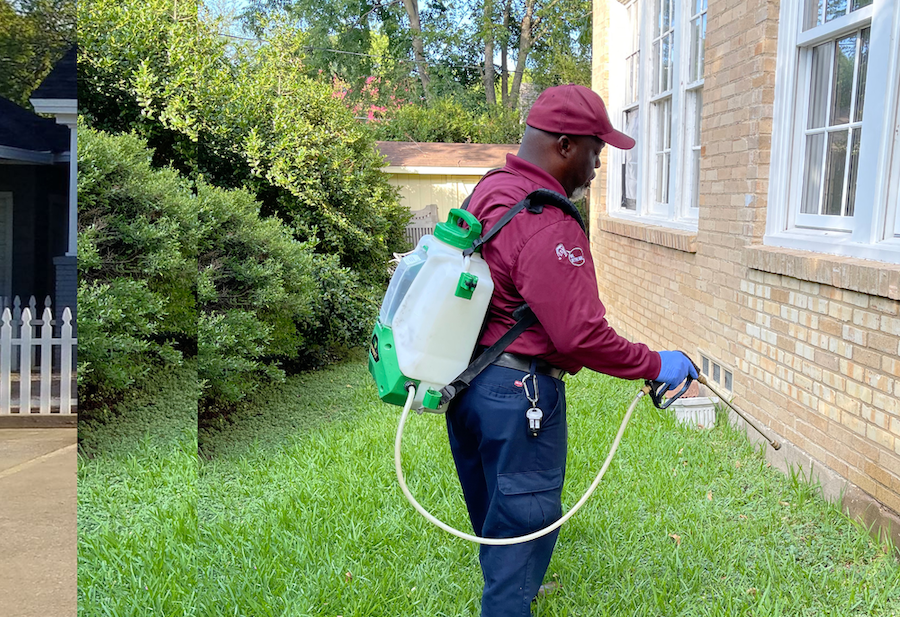A1 Charlotte Pest Control Companies - Your Regional Pest Specialists
Bed Pest Treatment Malfunction: Contrasting Chemical Vs. Non-Chemical Solutions
In the realm of pest control, especially when managing the persistent problem of bed pests, the choice between chemical and non-chemical therapy services can be an essential one. Both approaches offer unique benefits and downsides, affecting aspects such as effectiveness, security factors to consider, and overall cost. By taking a look at the nuanced details of each approach, a clearer understanding of which path to pursue in dealing with a bed pest infestation can be attained.
Effectiveness of Chemical Treatments
Chemical treatments for bed pest problems have actually been extensively identified for their powerful and rapid efficiency in getting rid of these bugs. When thinking about the performance of chemical therapies, it is important to understand that they can give a fast and thorough solution to a bed pest problem.
Additionally, chemical treatments have the benefit of offering residual impacts, meaning that they can remain to eliminate bed pests even after the preliminary application. This residual activity is particularly beneficial in combating any prospective re-infestations. Additionally, the fast activity of chemical treatments can bring relief to individuals facing extreme bed pest problems, allowing them to restore control of their living spaces quickly.
Safety And Security Interest In Chemical Solutions
One vital aspect that needs careful factor to consider when using chemical solutions for bed pest therapy is guaranteeing the security of passengers and the environment. While chemical therapies can be efficient in getting rid of bed insects, they might present dangers if not handled appropriately. One of the primary safety concerns with chemical services is the possible damage they can trigger to human health. Exposure to specific chemicals made use of in bed insect treatments can lead to respiratory issues, skin inflammation, or other damaging responses, particularly in people with pre-existing conditions or sensitivities. In addition, incorrect application or dosage of chemical pesticides can cause hazardous residues sticking around in the cured location, presenting long-lasting health threats to occupants.
In addition, the environmental impact of chemical remedies is an additional significant consideration. Some pesticides utilized in bed bug treatments might be damaging to advantageous bugs, wild animals, and ecosystems if they seep into the dirt or water systems. It is important to make use of chemical treatments carefully, complying with security guidelines, and considering much less toxic choices to minimize these risks and ensure the effective and risk-free management of bed pest invasions.
Advantages of Non-Chemical Approaches
Thinking about the possible safety issues and environmental effect related to chemical options for bed bug therapy, discovering non-chemical methods offers a promising alternative with several distinct benefits. Non-chemical techniques provide a more secure option for houses, especially those with pets, people, or kids conscious severe chemicals. These methods get rid of the dangers of exposure to toxic materials, minimizing the possibility for damaging health impacts. Moreover, non-chemical therapies are ecologically friendly, as they do not add to air or water pollution, making them a lasting selection for pest control.
Furthermore, non-chemical remedies can be effective in targeting bed bugs, consisting of hard-to-reach areas where chemical treatments may not permeate - Resources A1 exterminator charlotte nc. Methods such as heat therapy, vacuuming, vapor cleaning, and mattress coverings offer complete eradication without the use of hazardous chemicals.
Limitations of Non-Chemical Treatments

Furthermore, non-chemical therapies typically need several applications to accomplish effective elimination. This can be lengthy and may not constantly guarantee total removal of all bed bugs and their eggs, especially in hard-to-reach or hidden locations.
In addition, the success of non-chemical therapies greatly depends on proper execution and thoroughness, which can be challenging for people without expert experience. Inadequate application of non-chemical methods might cause incomplete eradication, resulting in consistent invasions and the demand for added treatments.
Consequently, while non-chemical treatments have their advantages, it is important to acknowledge these restrictions and consider them when establishing the most reliable method for managing bed insect problems.
Expense Contrast: Chemical Vs. Non-Chemical Options
Given the restrictions connected with non-chemical treatments, a vital aspect to assess in the context of bed bug management is how can we control pests the cost comparison between chemical and non-chemical choices. In contrast, non-chemical treatments like warmth treatment or heavy steam can be much more pricey, with prices ranging from $1,000 to $6,000 for a whole home. While the initial cost of chemical therapies might appear reduced, numerous treatments may be needed to completely eliminate the invasion, potentially enhancing the overall price.
Final Thought

Taking into consideration the potential security worries and ecological effect connected with chemical solutions for bed pest treatment, checking out non-chemical approaches presents an appealing alternative with several distinct advantages.Given the limitations linked with non-chemical treatments, a necessary aspect to assess in the context of bed insect administration is the price comparison in between chemical and non-chemical choices. In contrast, non-chemical treatments like heat treatment or steam can be more pricey, with expenses ranging from $1,000 to $6,000 for a whole home. While the preliminary price of chemical treatments might appear lower, several therapies may be needed to totally remove the problem, potentially increasing the overall cost.In conclusion, when comparing chemical and non-chemical bed pest treatment choices, it is vital to take into consideration efficiency, safety, advantages, limitations, and cost.